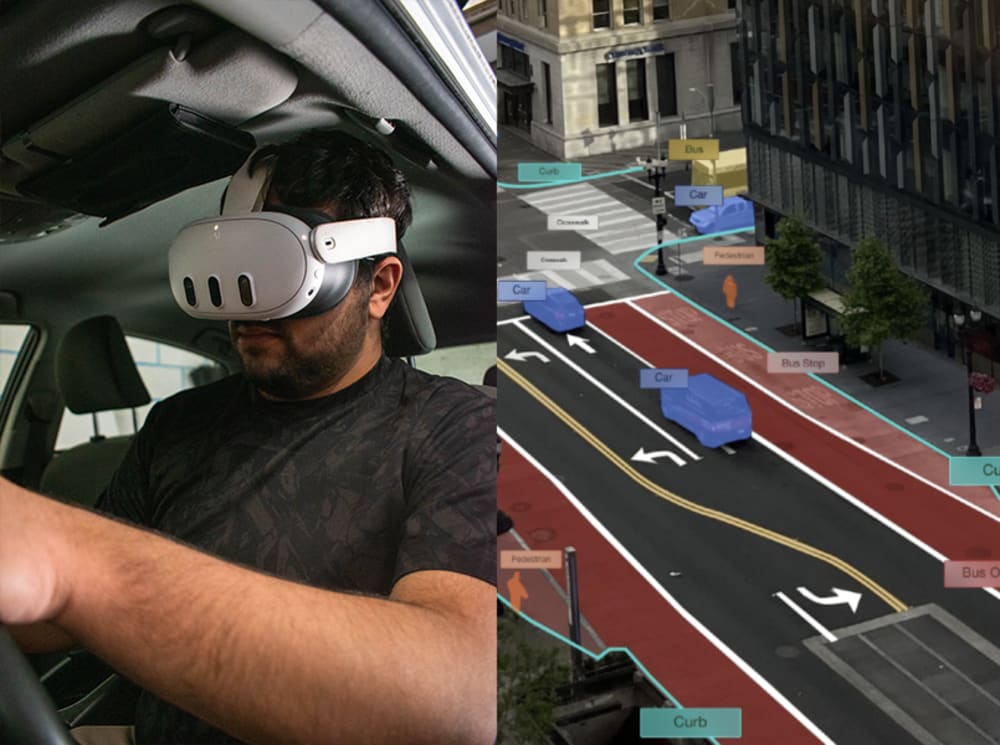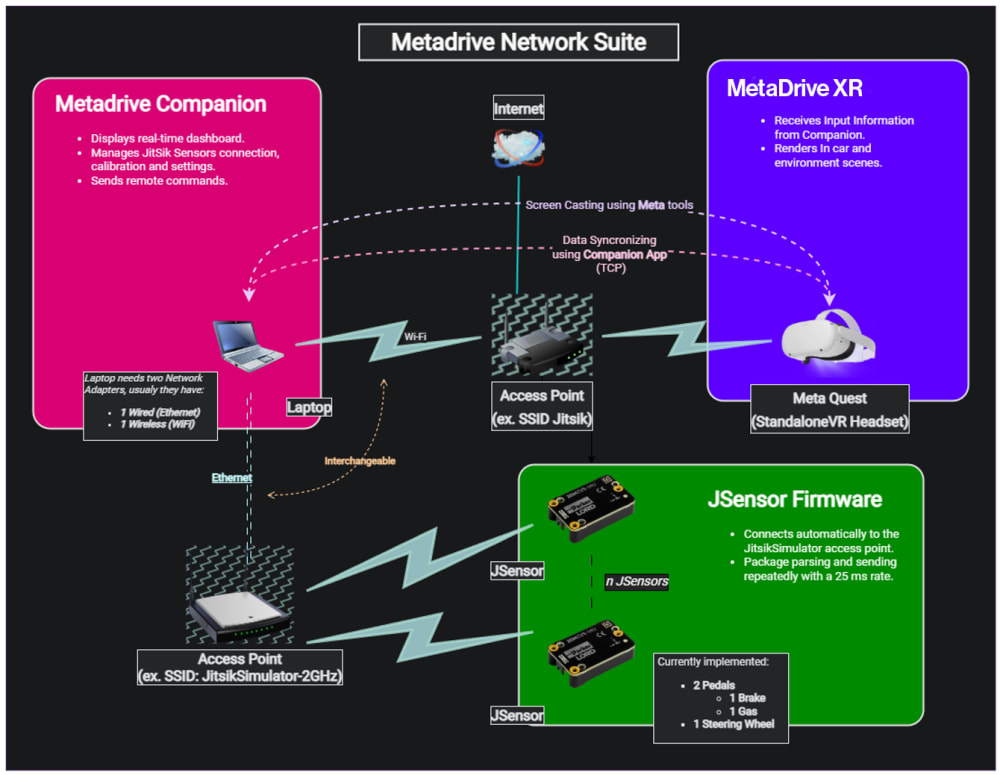
With over 40,000 roadway fatalities each year, driving is one of the leading causes of death in America. Teenage drivers account for a disproportionate number of these accidents, with 62% of teen drivers crashing in their first year. These fatalities are avoidable, as they result from a lack of roadway experience and insufficient preparation from existing training methods.
Traditional driving simulators have struggled to sufficiently immerse students in training scenarios. Typically, they display a virtual world on one to three monitors, which is far less realistic than driving an actual car. Limitations of technology have made it nearly impossible to build an effective simulator until recently. However, the advent of virtual reality (VR) and mixed reality (MR) technology has presented an opportunity to address this issue. Jitsik has developed MetaDrive XR, an immersive driving simulator leveraging MR technology to teach students to drive in high-pressure scenarios.
MetaDrive XR can be used in two ways: in a physical car and in a chair simulator. The physical vehicle model uses the controls of an existing car, with wireless JSensors affixed to the steering wheel and pedals. The student wears an MR headset, replacing the windshield, windows, and mirrors with a virtual simulation while maintaining a full view of the car’s controls and the student’s hands through a passthrough camera. This allows students to build muscle memory in the car they will eventually drive. The chair simulator works similarly, with sensors attached to replicated pedals and a steering wheel. Both simulation options utilize the MetaDrive XR companion app, which controls the simulator. The minimal hardware required to use MetaDrive XR allows for affordable use, with the construction of each simulator costing less than $1,000, and opportunities likely being available for families to rent simulators.
The value of MetaDrive XR lies in its ability to immerse students in dangerous scenarios safely. Students can experience situations such as nighttime driving, storm driving, and accident evasion. MetaDrive XR was first deployed at a driving school, where students tested a parallel parking simulator. Post-simulation surveys revealed that 86% of test participants agreed or strongly agreed that the simulator would be helpful in education.
A preliminary Learning Management System (LMS) is currently in development. This software, built into the MetaDrive XR Companion App, monitors various driving metrics to track driver performance in specific skills. It includes various modules that teach students to drive in different scenarios, each containing milestones and assessments to prepare students for real-world driving.
Illustration 1 shows a test participant using the MetaDrive XR in-car simulator alongside the virtual simulation.
Illustration 2 shows the virtual world in MetaDrive XR.
Illustration 3 shows a flowchart of the MetaDrive network suite. The Companion App runs on a laptop, connecting wirelessly with MetaDrive XR (running on a headset) through a wireless access point. Simultaneously, it connects to the JSensors through a separate access point. The laptop sends sensor data in real-time to the headset, which processes it to display the proper changes in the virtual world.
Video
-
Awards
-
 2024 Top 100 Entries
2024 Top 100 Entries
Like this entry?
-
About the Entrant
- Name:Chase Leibowitz
- Type of entry:teamTeam members:
- Helen Loeb
- Jaime Hernandez
- Patent status:pending









